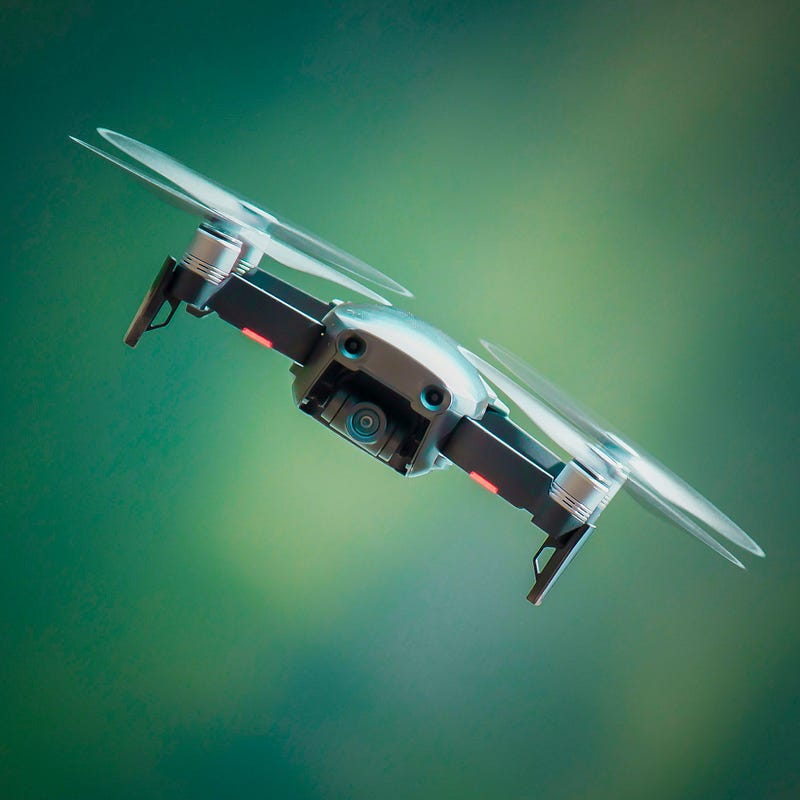From Consumer Gadget to Battlefield Essential: The Rise of DJI Mavic Drones in Modern Warfare

Affordability and Accessibility
One of the main reasons for the widespread military adoption of DJI Mavic drones is their affordability. Unlike traditional military drones, which can cost millions of dollars, commercial drones like the DJI Mavic are relatively inexpensive. This cost-effectiveness allows military organizations to purchase and deploy them in large numbers. For example, the DJI Mavic 3 can be bought for a few thousand dollars, making it accessible even to smaller military budgets and less affluent nations. In the ongoing conflict in Ukraine, the use of commercial drones like the DJI Mavic has been prolific. Ukrainian forces have utilized these drones for various tactical operations, demonstrating their significant impact despite their low cost. Additionally, these drones have been employed in innovative ways, such as dropping grenades on enemy positions, showcasing their versatility on the battlefield.
Versatility and Ease of Use
The DJI Mavic drones are known for their versatility and user-friendly design. They are equipped with high-resolution cameras, GPS navigation, and various sensors that make them suitable for a wide range of applications, from surveillance and reconnaissance to target acquisition and artillery spotting. Their ease of use means that they can be quickly deployed with minimal training, which is a significant advantage in fast-paced military operations. For instance, the Chinese military has been spotted training with DJI Mavic 3 drones equipped for aerial bombardment, indicating the extent to which these commercial drones are being adapted for military purposes. This trend is not limited to any single country; both Ukrainian and Russian forces have utilized DJI drones extensively in their operations. This widespread use underscores the drones’ adaptability and the strategic advantage they offer in modern warfare.
Adaptability for Military Use
Despite DJI’s efforts to restrict the use of its drones for military purposes, these devices have been adapted for various combat roles. In Ukraine, for instance, DJI Mavic drones have been modified to carry and drop grenades on enemy positions, demonstrating their adaptability for offensive operations. The Ukrainian military has heavily relied on these drones for both reconnaissance and direct attacks, highlighting their effectiveness in modern warfare. The ongoing conflict has seen the widespread use of these drones for tasks such as battlefield surveillance and guiding artillery strikes, which have become crucial due to the dense electronic warfare environment on the front lines. Additionally, long-range UAVs have enabled strikes deep within enemy territory, targeting critical infrastructure such as oil refineries and military bases, significantly influencing the strategic landscape of the conflict.
Impact on Modern Warfare
The proliferation of DJI Mavic drones has significantly impacted modern warfare by democratizing access to advanced aerial surveillance and combat capabilities. These drones have enabled smaller and less technologically advanced militaries to enhance their operational effectiveness. For example, in the ongoing conflict in Ukraine, both Ukrainian and Russian forces have utilized DJI drones extensively, leading to a new form of drone warfare where even consumer-grade drones play a critical role. The use of small, commercially available drones has allowed Ukrainian forces to conduct precise strikes and gather real-time intelligence at a fraction of the cost of traditional military hardware. Furthermore, Ukraine’s innovative use of drones has spurred the growth of its domestic drone industry, contributing to economic growth and technological advancement within the country. The international support in the form of drone donations and the adaptation of commercial technologies for military use have underscored the transformative impact of drones on modern conflict dynamics.
This adaptation and widespread use of DJI drones illustrate how commercial technology can be repurposed for military applications, changing the nature of modern warfare by making advanced aerial capabilities accessible to a broader range of actors. The conflict in Ukraine serves as a poignant example of this trend, highlighting both the strategic advantages and the challenges posed by the proliferation of such technologies.
Challenges and Ethical Considerations
The widespread military use of DJI drones also raises significant ethical and regulatory challenges. DJI has publicly condemned the use of its products for military purposes and has taken steps to prevent their misuse. For instance, the company does not market or sell its products for combat use, and it does not provide after-sales services for drones identified as being used for military purposes. DJI has also unequivocally opposed attempts to attach weapons to its products and refused to enable modifications that would allow for such use. Despite these measures, controlling the end-use of these drones remains difficult once they are sold. This challenge has led to situations where DJI drones are used in ways that contradict the company’s stated principles, such as the reported use by the Chinese military of DJI Mavic 3 drones for aerial bombardment training. Furthermore, the U.S. Army has ceased its use of DJI drones due to concerns over cyber vulnerabilities.
Conclusion
The success of the DJI Mavic drone in military contexts is a testament to the intersection of commercial technology and modern warfare needs. Their affordability, versatility, and ease of use make them an attractive option for military organizations worldwide. While DJI has attempted to distance itself from the military applications of its products, the reality on the ground shows that these drones have become indispensable tools in contemporary conflicts. As technology continues to advance, the role of commercial drones in military operations is likely to expand further. This expansion necessitates ongoing discussions about regulation, ethics, and the future of drone warfare. As the global market for drones grows, the need for robust regulatory frameworks and ethical guidelines becomes even more pressing to ensure that these technologies are used responsibly and for their intended purposes.
Comments
Post a Comment